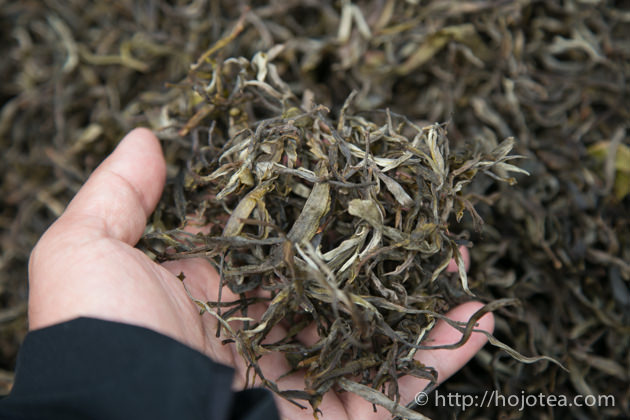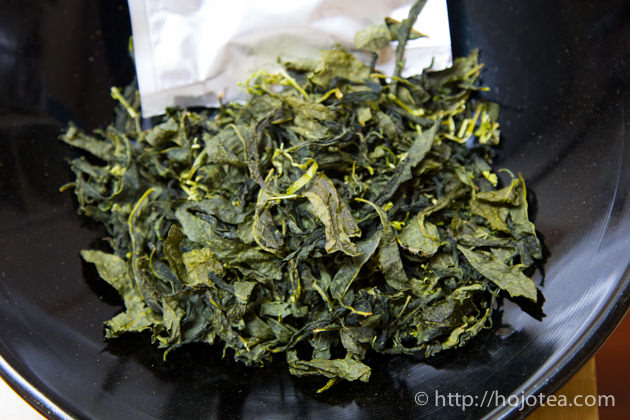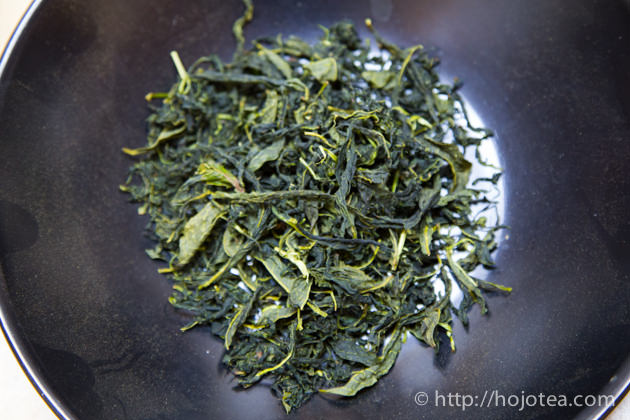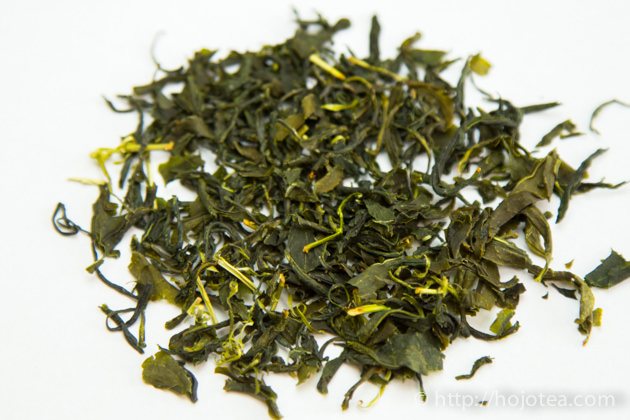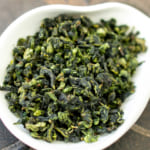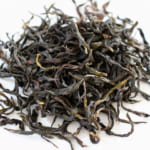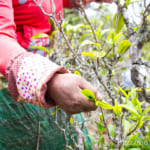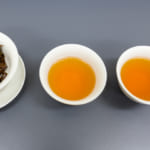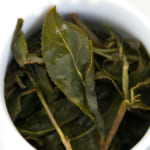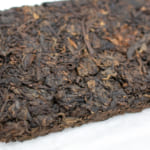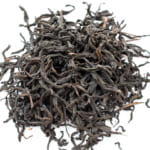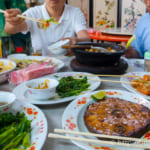- HOME >
- New Arrival at HOJO Online Shop
The New Release of Tsukigase Asamomi Sencha
- [2017.03.31] Posted By Akira Hojo

Most of the Japanese green teas have undergone intensive rolling process to make it into needle shape, and in general it becomes one of the key characteristics of Japanese green tea. We developed a Japanese green tea that undergone very light rolling. We named it as Tsukigase Asamomi Sencha. In Japanese, “Asamomi” means light rolling. This tea gives a refreshing floral flavor with clear taste and clean finishing.
https://hojotea.com/item/g43.htm

Japanese tea is less lasting in brewing
Many people may find that the taste and flavor of Japanese green tea do not last over many infusions. The first infusion is normally strong and flavorful, but on third or even on the second infusion, most of Japanese green tea tastes light and plain. Regardless of the brewing style, the main reason is because of the tea leaf is rolled very tightly, and because of this, the taste and flavor elutes instantly during tea brewing. Many of us are accepting it since we thought it is the nature of Japanese green tea. Nevertheless, I started to wonder why Japanese green tea is rolled so tightly. If tea is just rolled moderately, it should be able to last many more infusions.

In Japanese tea market, the shape of tea is always regarded as one of the very important quality criteria. Sometimes more emphasis was focus on the shape instead of the taste of tea. Therefore, Japanese tea is rolled tightly into needle shape. In fact, more rolling causes more cells are macerated and destroyed. As a result, tea doesn’t last in many brewing. This is the reason that as compared to other teas, sencha does not last in brewing. I often wonder if we can develop Japanese green tea that lasts more brewing.
Even if tea is not rolled, its flavor and taste is strong enough.
In fact, some teas are produced without rolling process, for example, the white tea. The process of white tea is as follow:
Withering >> Heating to bring fermentation to an end>> Drying >> Moderate baking. Despite the white tea is not rolled, still we enjoy the flavor and taste as much as other teas. Thanks to no rolling process, the freshness of white tea lasts over many brewing. Same result is observed in raw pu-erh tea too. Generally, as compared to other tea categories, the rolling process of raw pu-erh tea is very gentle. Sometime we came across raw pu-erh tea that is rolled very tightly and no doubt that its flavor lasts shorter compared to those teas that are rolled softly.
Why Japanese green tea is rolled tightly? One of the reasons could be due to the umami, which has been often regarded as a quality index of Japanese green tea. Umami is the amino acid compound called theanine.
Umami in tea was discovered by Dr. Sakado in 1950s. Since then, umami was regarded as one of the index to define the quality of green tea. This idea was greatly supported by people as it matched the modern agricultural practice. This idea back-up the modern agricultural practices since the more fertilizer is used in growing tea, the more umami is composed. The idea of umami as a quality index made everyone very happy. It created the demand of fertilizer, and based on the umami index, the quality of tea grown with fertilizer was justified. At the same time, the rolling became very important. With tighter rolling, the more umami substance will be eluted during tea brewing.
However, the more umami means more fertilizer. In tea, the extent of umami and the level of aftertaste are at inverse proportion, i.e., more umami tea normally has fewer aftertastes. In order to accumulate more mineral content, the tea tree has to grow slowly under severe environment. In China, Taiwan and India, the aftertaste of tea is often regarded as a more important tea quality index.
Developing very lightly rolled Japanese green tea
I always am looking for the tea grown in natural farming style. We selected the naturally farmed tea from Tsukigase, Nara prefecture. The same tea manufacturer has been producing our existing tea lineup, the Tsukigase Zairai Sencha. However, this new lineup of Tsukigase tea is collected from another tea garden. Basically, we reserve particular garden for producing each specific type of tea.

Natural farming means no fertilizer is used, not even the organic fertilizer. As compared to the tea grown in modern agricultural practice, the natural farming tea contains less theanine but it contains a lot of poly phenol and minerals. Since the natural farming tea contains less amino acid, there is no reason that we have to roll it tight. The main characteristic of natural farming tea is strong aftertaste and floral scent. To enhance these characteristics and makes tea lasting over many brewing, light rolling is definitely ideal.
We run series of experiments to finalize the optimum parameter
Generally, Japanese green tea is processed as follow.
- Heating by Steam
- First Rolling
- Second Rolling
- Third Rolling
- Final Rolling
- Drying
Looking at the processing of Japanese green tea it mainly involves many rolling processes. If you have ever visited any green tea factory in Japan, you would be astonished that the production facility is enormous in scale. In fact, most of the machineries are designed for rolling process. The tealeaf undergone four stages of rolling process, and finally tea will be rolled into needle shape. The other function of rolling machine is to reduce moisture content of tealeaf. During the rolling process, hot air is blown through the rolling drum to dry the tealeaf progressively.
After steaming process, we obtain four samples from each stage of rolling process and dry it using a box dryer.
This is the sample right after the 1st rolling.

Sample after the 2nd rolling
The intensity of rolling is in inverse proportion to the floral flavor
We collected tea sample from each stage of rolling process, i.e., we have gathered four tea samples representing the 1st, 2nd, 3rd and 4th rolling process, and one more sample is gathered immediately after the steaming process and it has not undergo any rolling. To our surprise, the tea sample that undergone no rolling gives the strongest floral flavor. It was a shocking fact. The floral flavor decreases when tea undergone more rolling. If you like floral flavor of tea, the tea that undergone no rolling is ideal. Unfortunately, technically it is impossible to get a tea right after the steaming without any rolling. This is because of tea leaves contains high moisture and tealeaf sticks together. So we studied carefully to decide in which stage we shall withdraw the tea.
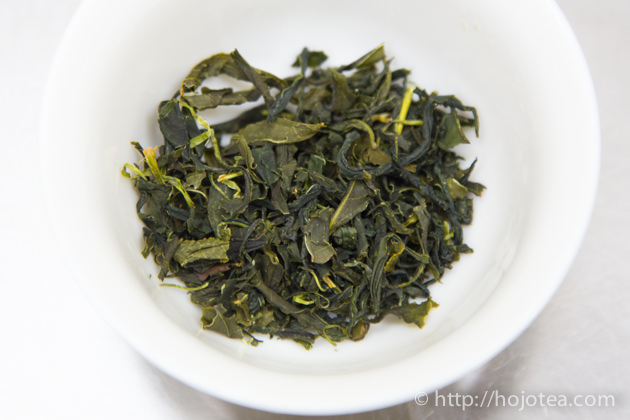
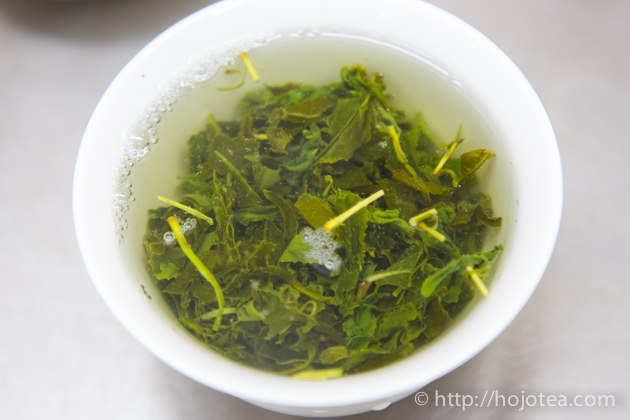

As usual, we never remove stems as it is essential for the taste.

Orchid floral scent thanks to the light rolling
The heat energy applied to the tea leaf is lesser if tea does not have to be rolled tightly. With more rolling, tea leaves are macerated more and it causes more destruction on the cell wall. Thus, tea that undergoes less rolling remains intact and we can minimize the oxidation during the process, so the original flavor of tea is maintained. As a result, tea can lasts more brewing, and also the flavor becomes very refreshing and floral reminiscent of orchid flowers. The flavor resembles the light fermented oolong from Taiwan, i.e. Wen Shan Bao Zhong tea. Usually, if tea is rolled more, the floral flavor is substituted by the typical sencha flavor which reminds us of steamed rice. I assume it is due to the frictional and external heat being applied during a rolling process. A manufacturer often told me that tea is moderately dried during rolling process. Of course the temperature on tea leaf or exhaust air is not very high as these temperatures are cooled by latent heat in accordance with the evaporation. However, there is considerable amount of heat given during the rolling process. Since I enjoy the floral flavor a lot, I tried to minimize the rolling and produce tea that gives more floral flavor than ordinary Japanese green tea.
We conducted very moderate baking at low temperature
Usually, less rolled tea gives green grassy flavor with a hint of floral scent. In fact the green grassy scent is not a preferred characteristic. However, once we reduce the greenish scent through the steaming or rolling process, the floral scent will disappear too. So I told the manufacturer not to worry about the greenish scent, and just directly supply the tea to me. After I receive the tea in Nagano, I use low temperature baking to reduce the green grassy scent. This is similar baking technique which commonly used for light fermented oolong tea. I was very satisfied with the outcome. We wish to continue collaborate with the manufacturer to further improve the processing parameter in future as I wish to bring out more floral flavor.
Use high temperature for brewing
Please use boiling water for brewing Tsukigase Asamomi Sencha. I usually brew this tea for about 10-20 seconds on the 1st brewing and less than a few seconds on the 2nd brewing onwards. I will then mix between 1st and 2nd brewing in order to even out the concentration. High temperature is necessary in order to efficiently extract poly phenols and flavor substances. The lower temperature is not necessary since this tea is less bitter in taste.
Related Articles
How to get the latest update on HOJO?
1. Follow Twitter, 2. Click "Like" on Facebook, and 3. Subscribe in newsletter. You can have the latest tea news from HOJO.
 Subscribe the Newsletter to enjoy the privileges
Subscribe the Newsletter to enjoy the privileges- You may receive a free sample upon purchase, or you may have the priority to purchase special products. So please remember to subscribe our newsletter as well as the social network.
- New Release of Lan Yun Tie Guan Yin from Anxi
- Lan Yun Tie Guan Yin from Anxi, is not just an ordinary Tie Guan Yin. It has a strikingly delightful flavor re …
- Two New Releases of Phoenix Dan Cong Oolong: Ba Xian King and Single Tree Tea
- We are excited to introduce two highly exclusive Phoenix Dancong Lao Cong teas in our latest release. The feat …
NEW ARTICLES
 Yunnan 2024 Spring Tea Sourcing
Yunnan 2024 Spring Tea Sourcing- Yunnan Province is globally renowned for the exceptional quality of its tea leaves. However, lax production ma …
 The Relationship Between Greenness of Tea Leaves and Fertilizer
The Relationship Between Greenness of Tea Leaves and Fertilizer- For both tea and vegetables, there’s a common misconception that a deeper green colour indicates better …
 Creating Muscatel Black Tea using a Unique Blending Method
Creating Muscatel Black Tea using a Unique Blending Method- I would like to introduce the unique creation of black tea with a distinctive muscatel flavor profile. Acquiri …
 New Release of Lan Yun Tie Guan Yin from Anxi
New Release of Lan Yun Tie Guan Yin from Anxi- Lan Yun Tie Guan Yin from Anxi, is not just an ordinary Tie Guan Yin. It has a strikingly delightful flavor re …
 The Difference Between Fermentation in Tea and Fermented Foods
The Difference Between Fermentation in Tea and Fermented Foods- Black tea and oolong tea are often categorized as “fermented teas,” but the extent to which they u …
 Two New Releases of Phoenix Dan Cong Oolong: Ba Xian King and Single Tree Tea
Two New Releases of Phoenix Dan Cong Oolong: Ba Xian King and Single Tree Tea- We are excited to introduce two highly exclusive Phoenix Dancong Lao Cong teas in our latest release. The feat …
 Easy Way to Prepare Flavorful and Warm Tea at the Workplace
Easy Way to Prepare Flavorful and Warm Tea at the Workplace- Have you ever experienced the transformation of tea stored in a thermos or water bottle at work, turning into …
 The new release of Bao Dao Shan Da Cha Tou Brick 2017, exclusively crafted from Da Cha Tou
The new release of Bao Dao Shan Da Cha Tou Brick 2017, exclusively crafted from Da Cha Tou- Bao Dao Shan Cha Tou Zhuan 2017 is a ripe pu-erh tea crafted into brick form. Bao Dao Shan is the name of the …
 We released Lapsang Suchong Qi Zhong Classic: Premium Lapsang Souchong
We released Lapsang Suchong Qi Zhong Classic: Premium Lapsang Souchong- Lapsang Souchong is one of the earliest known black teas distinguished by a unique production method and flavo …
 Regular Consumption of Umami Seasoning Can Influence Taste Preferences
Regular Consumption of Umami Seasoning Can Influence Taste Preferences- Excessive consumption of artificial condiments, such as umami seasonings, is believed to influence one’s …
Category
- New Arrival at HOJO Online Shop
- Featured Articles
- Newsletter
- Types of Tea
- Origin of Tea
- Teapot and Tea Equipment
- Tea Column
- How to enjoy tea
- Tea Processing
- How to choose quality tea
- Tea constituents and functional effect
- Safety of Tea
- Foods
- Tea Business Operation
- Hobby and Outdoor Activity
- Ranking of Tea
- Video
- FAQ
- Media Release
Profile

- AKIRA HOJO
- I invite you to experience my tea selections.I was born in Nagano, Japan. In university, I studied agricultural chemistry, and I have the master degree in food science. I worked in Japanese food industry for 10 years. I involved in R&D, QC and QA. As a factory manager, I implemented ISO9000 series and managed the factory.
- The Art of Tea Magazine
- We posted the article on “The Art of Tea Magazine No.9, the magazine is published in Taiwan. We featured …
- New Straits Times
- The Malaysian National Newspaper, New Straits Times featured HOJO Tea on 17-Oct-2007.
Shop Info

Address:Lot No. T-215, 3rd Floor, The Gardens Mall, Mid Valley City, Lingkaran Syed Putra, 59200 Kuala Lumpur
Tel: +603-2287-4537
Business Hour: 10am to 10pm


